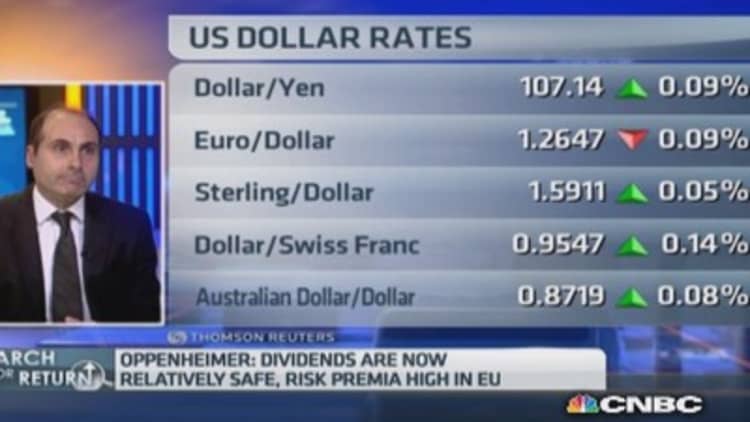If the fails to close above 1,905 points this Friday, then the next stop will be 1,770 with the possibility of a "major correction" to 1,570 by late November, according to Nomura strategist Bob Janjuah.
The index closed at 1,877 points on Tuesday evening after breaching the 2,000 point level in August. Some major wobbles for global equity markets have seen the bourse ease off its record highs but still manage to clock gains of 3.2 percent so far this year. Nomura's uber-bearish strategist predicts more pain ahead unless there's some major unexpected policy or sentiment shifts this week.
"If we see consecutive weekly closes below 1,905 then it would suggest to me that a very deep correction is under way," he said in a new research note on Tuesday.
Read More Forget earnings, S&P 500 is going to 1,950: Nomura's Janjuah
If it fails to reach this "key pivot point", Janjuah warns, then stocks will fall and the yield on the U.S. 10-year Treasury will hit 2 percent or below. If it then fails to reach that target by the Friday afterwards, then it is "entirely possible" that by late November it could fall below 1,650 points or even 1,570 points, he added. He notes that this bearish scenario would mean that Treasury yields would be nearer 1.75 percent by this point in time.
"If the market experiences the kind of risk-off moves described above over the next four to six weeks...then I think it is almost certain we will get a policy response from the (Federal Reserve) and/or the (European Central Bank) and/or the (Bank of Japan) and/or the (People's Bank of China)", he said
"If it materializes, this could then set up a meaningful risk bounce from late November into year-end and a little beyond."
Read MoreWhy the stock market selloff may be nearing an end
Janjuah is no stranger to gloomy predictions and has made several large calls in recent years. In November 2013, he said that the end of 2013 till the end of the first quarter of 2014 would be a buying window followed by a 25-50 percent sell-off over the last three quarters of 2014. He also predicted an interim sell-off last November -- which never materialized.

In early September this year, he said he was "mildly bullish" on risk assets for a three- to four-month timeframe, although warned of the 1,905 pivot point. The S&P 500 has lost 6.5 percent since the release of that research note. His continuing thesis on stocks - which he reiterated on Tuesday - revolves around fears of the weakness in global growth, deflation, and concerns about policymakers in the euro zone, Japan, China and the U.S.
Read MoreFund manager sentiment most bearish in 2 years
He believes that global deflation should remain a dominant theme and does not expect the Fed to hike its main interest rate until around late 2016 or early 2017.
With stocks markets stumbling in recent sessions after a six-year bull run, there has been many analysts questioning whether this could be the start of something more serious. Howard Silverblatt from S&P Dow Jones Indices told CNBC Wednesday that a weak earnings season could mean that equity traders see more than a correction.
Goldman Sachs is a little more positive with its outlook. Peter Oppenheimer, the chief global equities strategist at the bank, has a "neutral" outlook on the S&P 500 for the next three months and is "overweight" on the European market. He told CNBC Wednesday that growth in the euro zone is bad but "not terrible".


